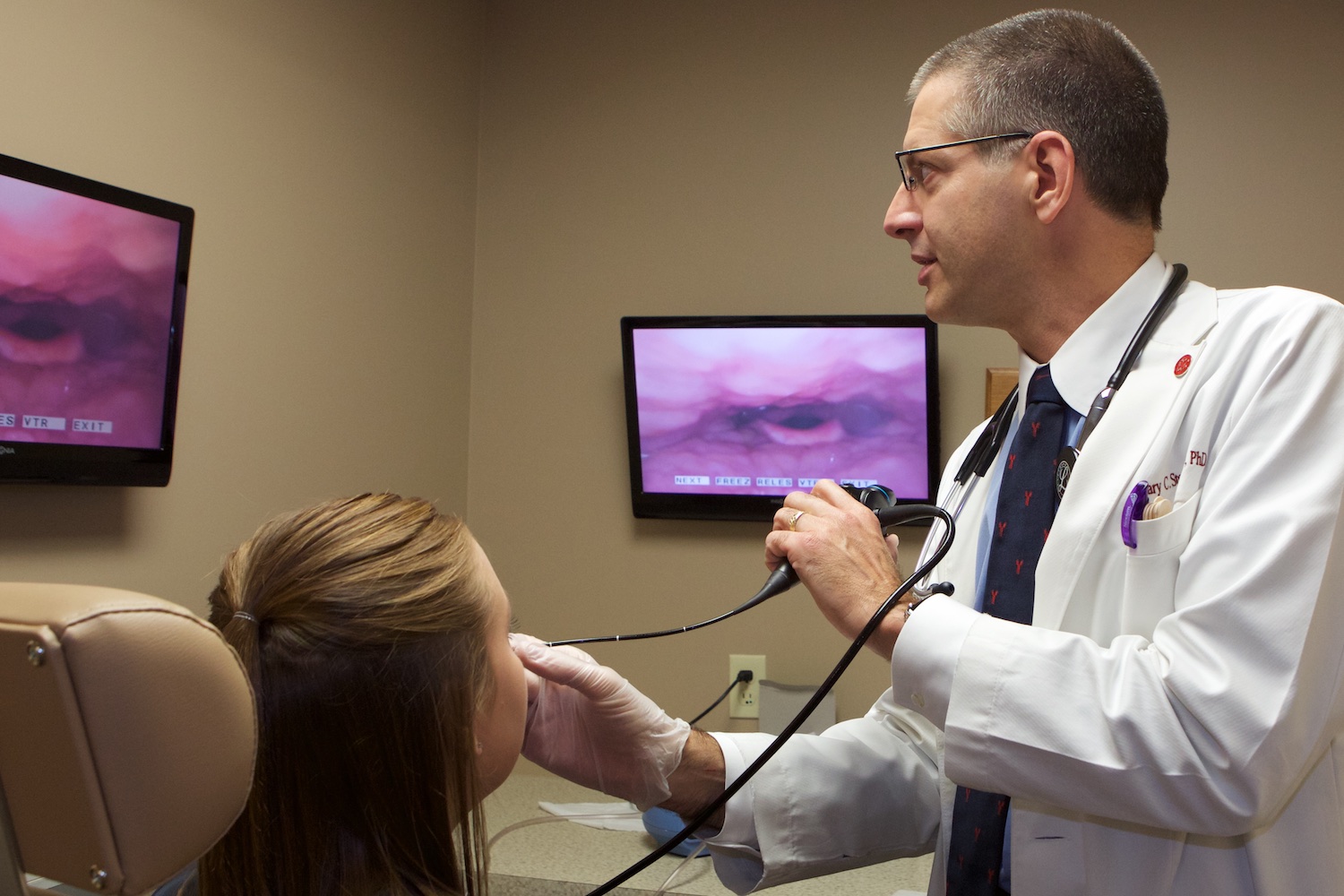Fiberoptic rhinoscopy is a quick, inexpensive means to evaluate the upper airway. First, our clinical staff spray a decongestant into your nose to open up the nasal passages. A local anesthetic is also used to make sure the procedure isn’t too uncomfortable. The physician then inserts the thin, flexible scope into your nostrils and visualizes the structures of the airway all the way down to the larynx. Our Greenfield office rhinoscopy suite is set up so that you have the option to watch video from the scope and have the physician explain findings in real time if you would like!




